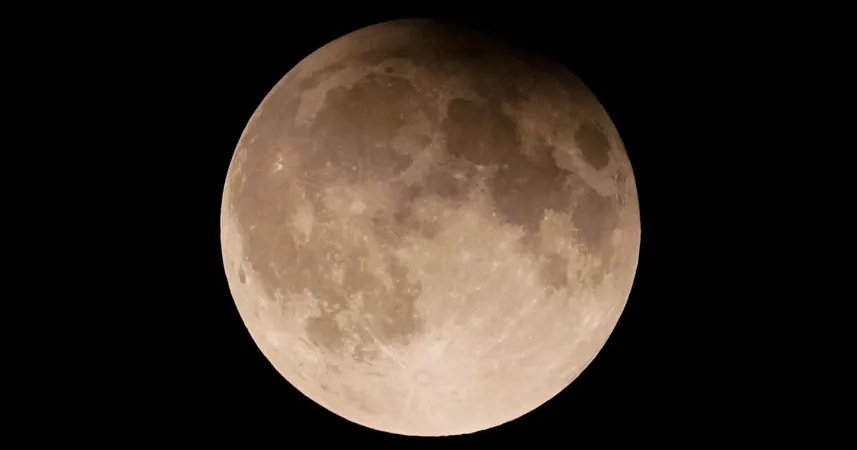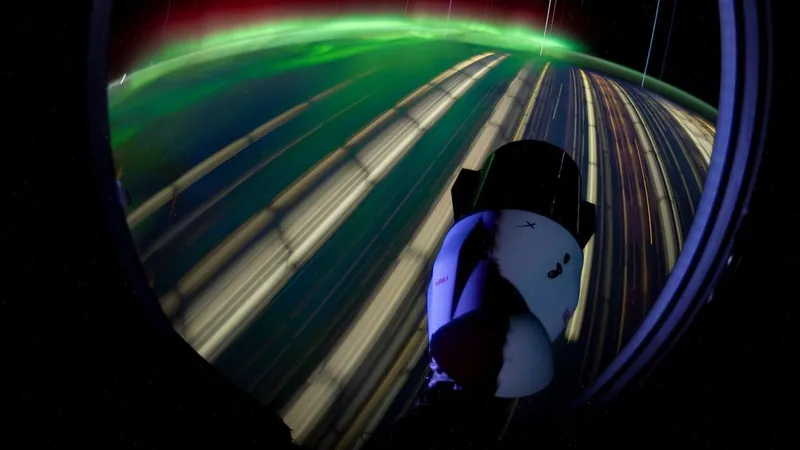
Earth Bids Farewell to Temporary 'Mini Moon' – But Not for Long!
2024-11-24
Author: Arjun
Earth Bids Farewell to Temporary 'Mini Moon' – But Not for Long!
In a cosmic spectacle, earth is preparing to say goodbye to a transient visitor, dubbed the 'mini moon,' an asteroid officially known as 2024 PT5. Though this object will zip away into the depths of space, it’s set to return for a brief rendezvous in January, where NASA has exciting plans to observe it with a radar antenna.
This intriguing asteroid, estimated to be about 33 feet in size, is believed to be a fragment blasted off the Moon’s surface by a collision with a sizable asteroid, leaving scientists curious about its origins and properties. NASA clarifies that while 2024 PT5 has exhibited behavior similar to that of a moon, it was never captured in Earth's gravitational grasp; hence, it's technically not classified as a moon.
The asteroid was first detected in August of this year and has been under close scrutiny by astrophysicist siblings Raul and Carlos de la Fuente Marcos from Complutense University of Madrid. They have collaborated with observatories in the Canary Islands, providing hundreds of observations which characterizes the rock's mini-moon-like trajectory around our planet.
As of now, 2024 PT5 is more than two million miles away, making it too faint and small for visibility without advanced telescopes. However, come January, when it approaches within 1.1 million miles of Earth, NASA will leap into action! Utilizing the Goldstone solar system radar antenna in California’s Mojave Desert, part of the Deep Space Network, they will study this cosmic stranger for over a week. This radar technology is pivotal in mapping asteroids and enhancing our understanding of these celestial wanderers.
Interestingly, when this asteroid swings by again in 2055, it will be traveling at speeds exceeding double its current velocity, which means it won’t linger long during its visit.
2024 PT5's journey showcases the dynamic nature of our solar system and presents a fantastic opportunity for scientists to enhance their comprehension of asteroids and their potential links to celestial bodies like the Moon and Earth. Keep your eyes on the skies, as we prepare to welcome back this curious traveler soon!




 Brasil (PT)
Brasil (PT)
 Canada (EN)
Canada (EN)
 Chile (ES)
Chile (ES)
 España (ES)
España (ES)
 France (FR)
France (FR)
 Hong Kong (EN)
Hong Kong (EN)
 Italia (IT)
Italia (IT)
 日本 (JA)
日本 (JA)
 Magyarország (HU)
Magyarország (HU)
 Norge (NO)
Norge (NO)
 Polska (PL)
Polska (PL)
 Schweiz (DE)
Schweiz (DE)
 Singapore (EN)
Singapore (EN)
 Sverige (SV)
Sverige (SV)
 Suomi (FI)
Suomi (FI)
 Türkiye (TR)
Türkiye (TR)